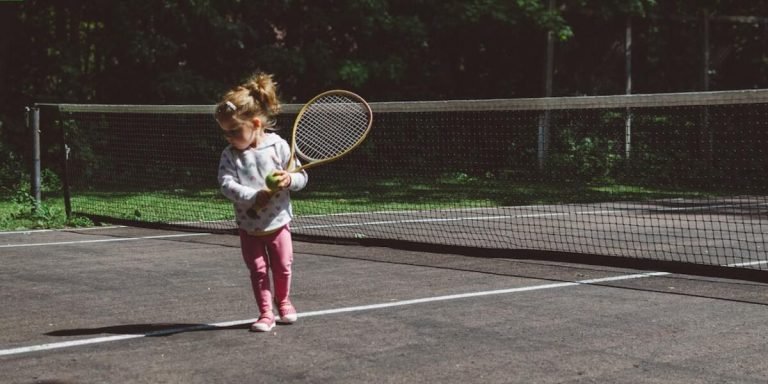Sensory Overload Test: Understanding Its Importance in Child Development
Navigating the complex realm of child development often presents a host of challenges. One crucially important aspect that remains significantly underdiscussed is the sensory overload test – an assessment tool designed to determine if children are overly sensitive or reactive to certain stimuli in their environment.
The sensory overload test plays a pivotal role in special education resources and support, particularly for those with neurodiverse conditions like Autism Spectrum Disorder (ASD). Recognizing these sensitivities early on can provide essential insights into individual learning needs and effective educational strategies. The subsequent information aids educators and parents alike in fostering optimal developmental environments conducive to every child’s growth trajectory.
Did you know?
Did you know that by the age of five, a child’s brain is already 90% developed? This makes early detection and management of sensory overload crucial in these formative years.
Understanding Sensory Overload: Key Concepts and Indicators
Sensory overload, an often misunderstood concept in the spectrum of special education needs, is becoming increasingly prevalent among children today. Various factors contribute to sensory overload such as technology integration in our daily lives and educational settings. Despite its growth rate, it remains a complex area for many parents and educators to navigate through.
In understanding sensory overload or ‘sensory processing disorder’, envision how different stimuli like sight, sound or touch interact with your senses at any given moment. Now magnify those sensations tenfold – this gives you a peek into what individuals facing sensory-overload experience regularly. For these people especially young learners who are still developing their cognitive abilities technological advancements would not necessarily bring joy but can be overwhelming resulting in withdrawal behaviors.
- Extreme sensitivity to light from digital screens, evidenced by frequent squinting
- Avoidance of loud applications that need high-volume audio
- Inability to focus on tasks because of heightened external stimuli
Early recognition of these signs enables us to develop effective intervention strategies. These strategies ensure that our technology-rich classrooms remain inclusive for all learners, whether they are divergent or convergent thinkers.
Recognizing the Signs of Sensory Overload in Children
In an era where technology integration in education has become prevalent, understanding these indicators becomes even more important. One such measure that has benefitted greatly from technological advancements is the “sensory overload test”. Introduced recently into mainstream diagnosis procedures, it enables educators and parents to accurately identify symptoms related to sensory processing disorder.
The key indicators generally involve emotional reactions such as anxiety or irritability when exposed to certain stimuli—be it visual like bright lights; auditory like loud sounds; touch-related pressures on skin etc.
Children facing sensory oversaturation may also display behavioral changes including lack of concentration during classes due their inability filter out irrelevant external distractions—an aspect which needs special attention while designing online learning modules.
Another sign could potentially be difficulty following verbal instructions—a factor predictive while integrating audio-visual elements within digital teaching tools.
Therefore identifying before administering any form of specialized instruction would ensure maximum productivity amongst learners avoiding unnecessary discomfort effectively turning challenges into opportunities by utilizing need-based technologies whilst educating our young scholars.
The Importance of Early Detection for Effective Intervention
Recognizing sensory overload early in children is crucial for effective intervention. Identifying this issue enables parents and educators to take the necessary steps towards providing support, making lifestyle adjustments, and even finding professional help when needed.
One great way of identifying whether a child may be suffering from sensory overload is through a ‘sensory overload test.’ A variety of these assessments exist today – many aided by current-day technology advances. These can range from online questionnaires filled out by caregivers or teachers who regularly interact with the child to advanced apps that monitor patterns in behavior and responses over time.
Technology has indeed made it easier to capture data on possible symptoms such as oversensitivity to light, sound or touch; difficulty interacting socially; uncoordinated movement and more. It’s important not only because they catch potential issues sooner but also because these tools are readily accessible—giving you an extra layer of reassurance whenever you have concerns about your little one’s behavioral changes.
When used correctly, technologies like virtual reality (VR) could possibly be employed for conducting standardized sensitivity tests in controlled environments – paving new ways for paediatric health advancements right at our fingertips!
Strategies for Managing Sensory Challenges in Educational Settings
As digital education evolves with the world, understanding sensory challenges within an educational setting becomes critical. Now more than ever before in 2023, children grappling with this reality need to be understood and supported not just by parents but teachers as well. Sensory overload can significantly impair a child’s learning capabilities which throws light on the importance of special resources and support.
One effective strategy in managing these sensory challenges is technology integration into our classrooms. As it bridges gaps between traditional teaching methods and innovative pedagogies, specially designed apps or devices help ease students’ experiences experiencing sensory overloads. They provide unique stimuli that may facilitate better focus while reducing distractions associated with general classroom noise or visual chaos.
Moreover, educators are now equipped with tailored tools allowing them to modify instructional techniques based around individual student needs – thereby fostering inclusiveness through diversity acceptance in their classes’ dynamics.
Meanwhile, regular implementation of ‘sensory breaks’ during lessons has been heralded as incredibly beneficial for students struggling against overwhelming external stimuli- a simple yet clever shift made possible due to various technological advancements available today that make scheduling these periodic pauses achievable almost seamlessly without disrupting class proceedings!
Implementing Sensory Integration Techniques in the Classroom
To effectively manage sensory challenges in educational settings, the implementation of sensory integration techniques within the classroom is essential. These strategies target children who might struggle with a variety of stimuli and possibly require something like ‘sensory overload test’ to ensure they are receiving appropriate support.
Firstly, creating an environment for multi-sensorial experiences helps students engage better. Introduce resources that cater to various senses – play dough or fidget toys can facilitate tactile learning, while dim lighting coupled with calming music could soothe those overwhelmed by bright lights and loud noises.
Secondly, technology plays a critical role in providing special education resources and support. Assistive tech tools have made considerable strides since their inception; offering customized solutions tailored to each student’s unique needs. For instance, apps such as Proloquo2Go assist non-verbal students communicate more seamlessly using symbol-based language boards on tablets.
Furthermore, incorporating digital games stimulates active participation from all learners irrespective of their individual abilities owing to its interactive nature which fosters both cognitive development & hand-eye coordination.
Finally yet importantly comes fostering regular communication between teachers & parents/guardians regarding progress updates &, if needed modifications befitting child’s comfort level while ensuring it aligns well with his/her overall academic growth plan .
Monitoring these strategies regularly via means like ‘sensory overload test’, educators not only gain insight into what works best but also keep evolving alongside technological advancements prevalent in 2023.
Creating Individualized Support Plans Based on Sensory Needs
Creating individualized support plans based on sensory needs plays a crucial role in managing sensory challenges within educational settings. These personalized strategies help children cope with the often overwhelming feelings that may surface due to their cognitive, auditory, visual or tactile sensitivities.
One effective strategy is incorporating technology into learning environments. In today’s world of 2023 where digital tools are more accessible than ever before and constitute an integral part of our everyday life experiences – they can be customized to suit a child’s unique requirements.
For instance, applications designed for sensory overload tests could serve as valuable Special Education Resources and Support tools. They provide educators with reliable data about how much stimulation each student can handle during various activities throughout the school day – whether during recess when noise levels tend to peak, or while engaging in hands-on group tasks which might involve touching different materials.
Based on insights gathered from such apps, teachers can adjust lesson structures accordingly. Such adjustments include providing quiet time after noisy periods for those students who exhibit signs of distress following exposure to loud noises; alternately timed breaks for kinesthetic learners keen on physical activity; tactile objects embedded within lessons plan catering neurodiverse students etcetera.
Furthermore, special keyboards suitable for visually impaired pupils enabling them easier access towards digital canvas thus illustrating Technology Integration in Education progressive impact – it empowers all students regardless their disabilities by creating equality opportunities thereby aiding inclusion efforts considerably!
Evaluating and Selecting Special Education Resources for Sensory Issues
Navigating the world of special education can be a complex task, especially when it comes to children prone to sensory overload. A child regularly participating in an environment that excessively triggers their senses might struggle with focusing on tasks and may even exhibit behavioral issues. In such situations, conducting a ‘sensory overload test’ becomes paramount for parents and educators alike.
One method includes evaluating educational resources tailored specifically around this challenge. The use of technological tools has seen significant rise over recent years because they offer personalized learning paths designed keeping sensory conditions in mind. Not only does technology integration make lessons engaging but also creates a controlled environment suitable for students sensitive to traditional classroom dynamics.
Selecting appropriate tech-based resources requires keen understanding about different digital platforms available as well as your youngster’s unique needs impacted by sensory load considerations. Engage interactive apps or online programs that allow customization — like adjusting screen brightness according to light sensitivity or controlling audio volume levels based on sound tolerance limits — which provide quieter yet effective teaching approaches reducing potential stressors.
Tools to Assess Potential Sensory Processing Difficulties
In today’s digital age, there are several tools that educators and parents can use to assess potential sensory processing difficulties in children. These problems often reveal themselves as sensitivity to certain environments or phenomena – a state otherwise known as ‘sensory overload’, which could make learning challenging for some youngsters.
One practical tool at your disposal is the internet-based ‘Sensory Overload Test’. This simple yet effective test helps determine whether a child may be experiencing difficulty with sensory processing. The quiz includes various questions regarding daily activities and behaviors that might indicate an issue.
Furthermore, you should explore software applications specifically developed for this purpose, many of them based on advanced algorithms capable of generating quick insights about possible areas of concern. Some apps even provide detailed analytics along with visual representations making it easier to comprehend results obtained from these special education resources.
The use of VR (Virtual Reality) has also revolutionized how we tackle issues related to Sensory Processing Disorder (SPD). Virtual reality allows us both visualize and understand what someone dealing with SPD experiences during episodes considered overwhelming by ordinary standards; such technology offers solutions tailored according not only individual needs but their specific symptoms too!
Lastly, don’t overlook traditional screening techniques like teacher observations or standardized tests – albeit they have been around awhile now! However keep up-to-date all new developments within field: after all world advancing rapidly 2023 where exponential progress seen across every sector including childhood education thanks integration Technology into classroom settings!!!
Curating a Toolkit: Essential Aids for Students with Sensitivity Concerns
Selecting the proper aids and resources can be instrumental in helping students with sensitivity issues navigate their academic journey. As sensory concerns become more understood, technology has stepped up to deliver potential solutions.
One fundamental step is taking a sensory overload test. While traditionally performed by occupational therapists or psychologists, digital versions are now available for parents and educators alike to identify over-sensitivity symptoms early so that they can craft appropriate support strategies.
When curating your toolkit of special education resources, consider including adaptive tech tools designed specifically for these students’ needs. In 2023 we notice considerable advancements in accessible software applications which help children manage their unique challenges effectively while being cognitively engaging at the same time.
There’s an array of apps addressing different aspects of this spectrum disorder from calming down when feeling overwhelmed during class hours or aiding those who have difficulty processing language due to auditory sensitivities – each equipped with features like customizable settings allowing one-on-one consultations between student and teacher even if it’s done remotely – thanks largely due to pandemic-induced changes made within educational structures worldwide throughout recent years.
Including assistive technologies such as noise-canceling headphones and weighted blankets into your suite may also provide additional comfort especially if identified through a comprehensive sensory overload test indicating heightened levels of sound/light touch sensitivity respectively among individuals diagnosed having autism spectrum disorders (ASD).
Conclusion
In conclusion, being able to recognize and assess sensory overload through a sensory overload test can be instrumental in supporting your child’s development. By understanding their unique sensitivities, you pave the way for more personalized learning experiences that cater to their distinct needs. Remember, every child is different and what works for one might not work for another.
So it’s essential we remain patient and flexible as we navigate this path.
Thankfully with resources widely available on our website about educating children, supplemented by support materials curated specifically for parents and educators alike – no individual should feel alone or unprepared in this journey of childhood education. The challenges are many but remember – they breed the sweetest rewards! Stick around to explore more ways how you can make a difference in shaping up tomorrow’s leaders today.







